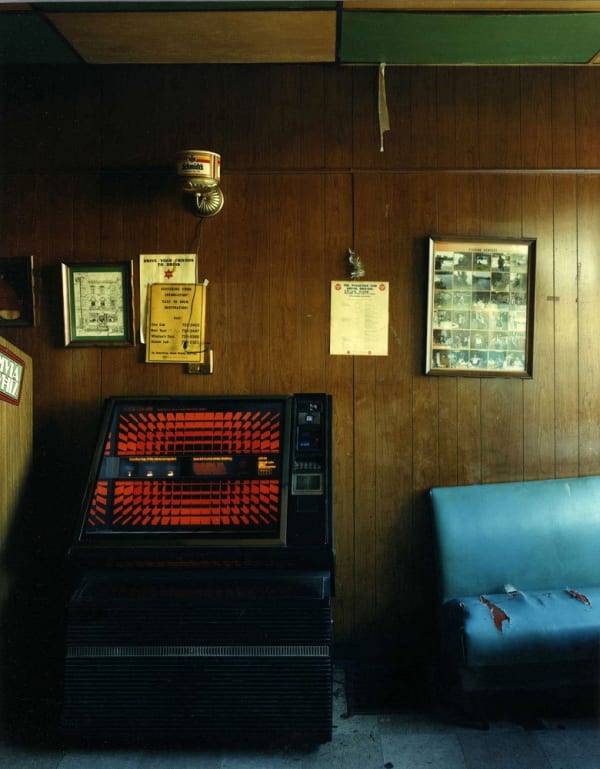Bruce Wrighton
-
 Bruce WrightonMan with studded bracelet, Carnival, Johnson City, NYTirage C-print d'époque20 x 25 cm
Bruce WrightonMan with studded bracelet, Carnival, Johnson City, NYTirage C-print d'époque20 x 25 cm
Dim. papier: 20 x 25 cm -
 Bruce Wrighton1953 Nash Rambler, Wilber's Jewelers, Johnson City, NYTirage C-print postérieurDim. papier: 20 x 25 cm
Bruce Wrighton1953 Nash Rambler, Wilber's Jewelers, Johnson City, NYTirage C-print postérieurDim. papier: 20 x 25 cm -
 Bruce WrightonYonda's Bar, Binghamton, NYTirage C-print d'époque20 x 25 cm
Bruce WrightonYonda's Bar, Binghamton, NYTirage C-print d'époque20 x 25 cm
Dim. papier: 20 x 25 cm -
 Bruce Wrighton, Paddy's Ale House, Binghamton, NY, 1986
Bruce Wrighton, Paddy's Ale House, Binghamton, NY, 1986
-
 Bruce WrightonWoman in pink, Carnival, Johnson city, NYTirage C-print d'époque20 x 25 cm
Bruce WrightonWoman in pink, Carnival, Johnson city, NYTirage C-print d'époque20 x 25 cm
Dim. papier: 20 x 25 cm -
 Bruce WrightonFred, Binghamton, NYTirage C-print d'époque20 x 25 cm
Bruce WrightonFred, Binghamton, NYTirage C-print d'époque20 x 25 cm
Dim. papier: 20 x 25 cm -
 Bruce WrightonSan Rocco Club, Cortland, NYTirage C-print d'époque20 x 25 cm
Bruce WrightonSan Rocco Club, Cortland, NYTirage C-print d'époque20 x 25 cm
Dim. papier: 20 x 25 cm
Bruce Wrighton's artistic career consists of three projects made in the mid-1980’s with an 8 x 10” camera in the vicinity of his home in Binghamton, New York: Street Portraits, Dinosaurs and Dreamboats, and St. George and the Dragon.
Street portraits is a powerful yet tender series that places Wrighton in the tradition of Eugene Atget, Lewis Hine, and August Sander. It focuses on individuals and couples who were very much part of the working class, many of whom lived outside the mainstream of society. Carnival workers, a parking lot attendant, a security guard, were among the over 75 people that willingly agreed to pose as he composed their portraits with his cumbersome 8 x 10” camera. Each of them gave something of him or herself to Wrighton, who recorded their often bruised faces and tattered clothing with affection and respect.
Dinosaurs and Dreamboats celebrates the classic American cars of the 1950’s, juxtaposed with the older architecture of Binghamton. More than simply portraits of beautiful cars, these photographs transport the viewer back in time to an era when America was optimistic, upbeat, and full of swagger.
St. George and the Dragon represents an investigation into the power of images and icons, both secular and sacred, that Wrighton discovered around Binghamton in taverns, churches, and homes. Whether it is a glowing Wurlitzer jukebox under a floating Christ figure from a church basement, or a bucolic lake scene with a fisherman in a boat, painted on an old barroom wall, Wrighton sought to better understand the power of icons and images and how they make us focus and transcend our everyday experiences.
Bruce Wrighton lived and worked in Binghamton, New York until his death in 1988 at the age of 38.






